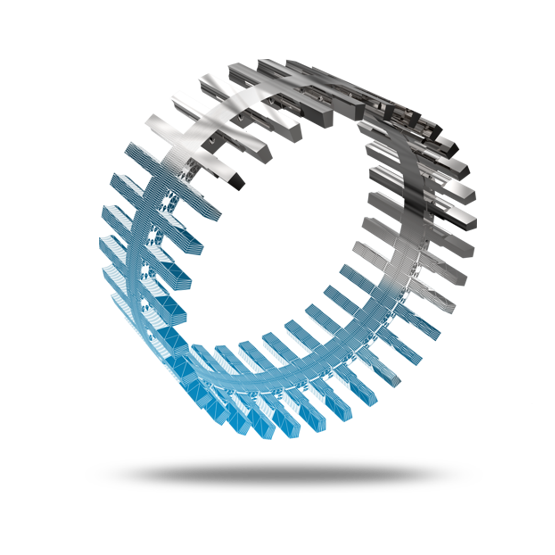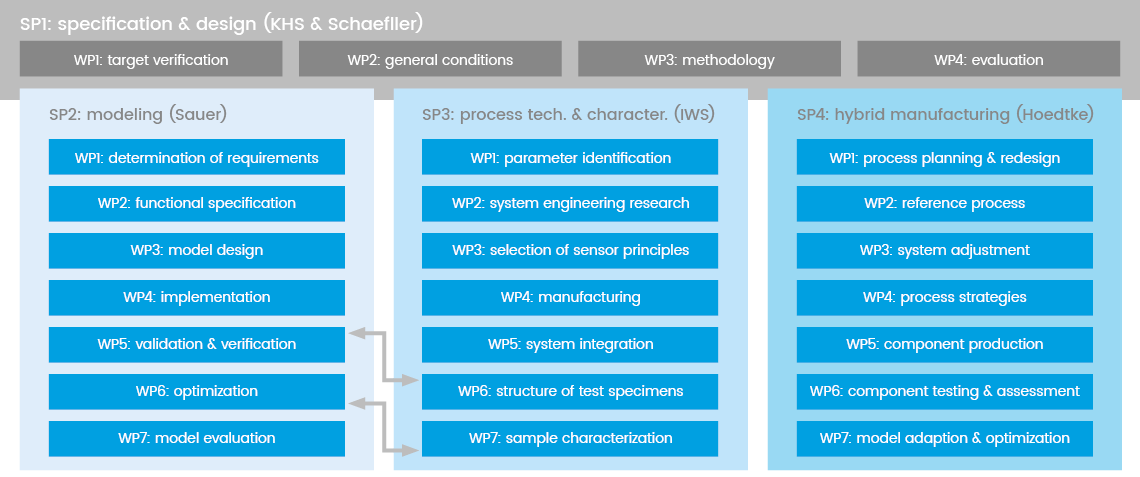Technology Project
Hybrid+

Objective:
Creation of a comprehensive and precise model for the description and parameterization of hybrid laser powder cladding
Partners:

Duration: 01.11.2017 - 31.10.2020
The dominant additive technology in the field of hybrid machines is laser cladding. The reason for this is that in this way the high deposition rate of the process can be combined with the high precision of conventional ablation technologies. This enables the generative production of complete components in finished part quality. The hybrid production technology can make a decisive contribution in the field of additive manufacturing if the effectiveness and flexibility of the production preparation is increased and the reproducibility is improved.
At present, process optimization in LPA is largely extrinsic and serial and is carried out by the system operator, who produces, analyzes, evaluates and corrects the process parameters by iterative adjustment within the framework of the technological and material-related framework conditions. The number of iteration loops correlates significantly with the welding technology experience, whereas the throughput time per iteration depends to a large extent on the available sensor technology for process monitoring and the time required to evaluate the indicator values.
By linking closely documented reference processes with the results of the component characterisation, a mathematical model is to be created which significantly reduces the number of necessary iteration steps. By means of a repetitive optimization process, the data basis for the model is continuously broadened and the calculation results are constantly improved. For this purpose, four subprojects are being worked on in the Hybrid+ joint project, as shown in the following diagram.

Based on the process parameters, the detected process phenomena and characterization results form the characteristic values, which can be calculated later in the model. The aim is to minimize thermally induced stresses and distortions and to investigate the relationship with deposition rates, energy input, changes between subtractive and additive manufacturing, and process speed
In order to collect the data for the creation of the process model, the process should be recorded as fully as possible. Currently existing sensor systems are often only used to detect individual process variables. In the project, the individual systems are to be linked with each other in such a way that the state of the process can be completely reconstructed at any time. The overall identification of the multiple process variables and their linkage with the plant parameters and the results of the subsequent characterization is a major challenge, but is necessary to represent a mathematical-physical model.
The basis of the investigations are the demonstrator components of the end users which are evaluated, defined and later qualified with regard to their functionality and quality according to defined aspects. The aim of this project is to design quality assurance chains in a more closely meshed manner even before production by means of a process model that is predictable for defects and to optimize the process by means of geometry-adapted traversing strategies.